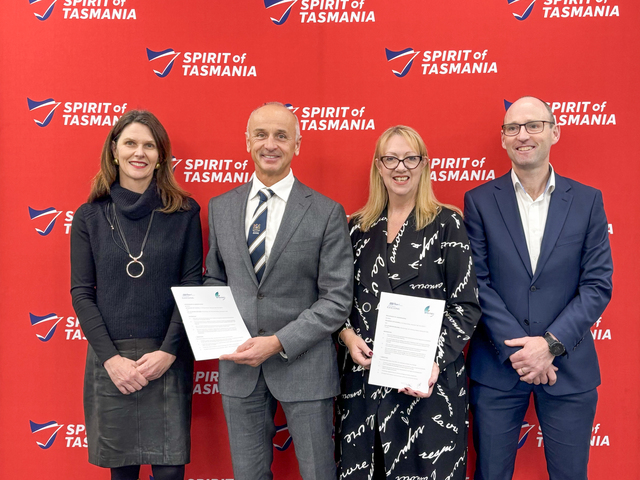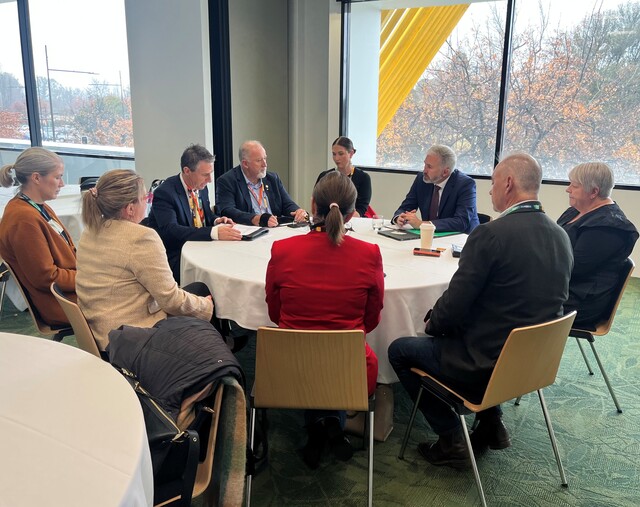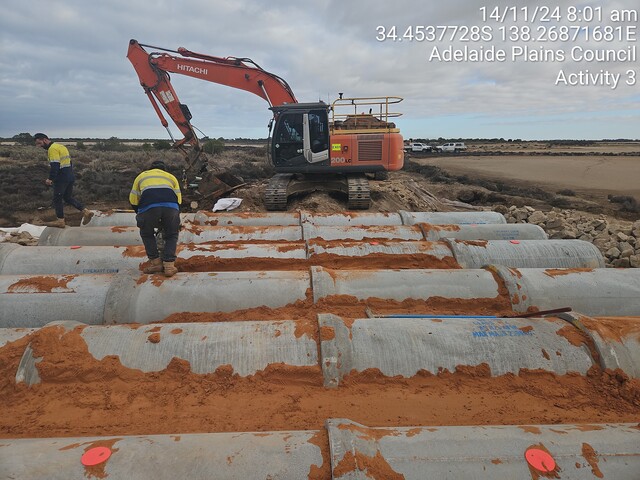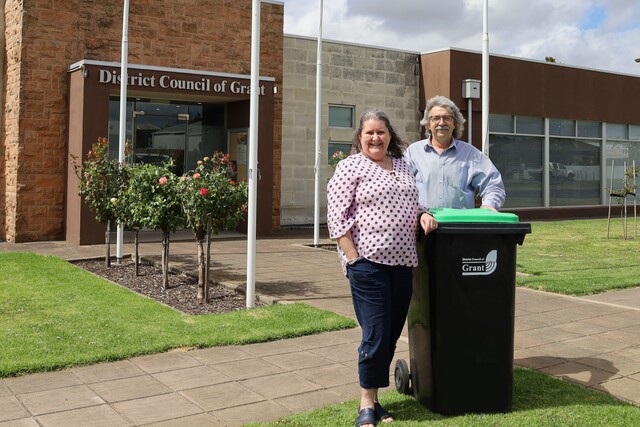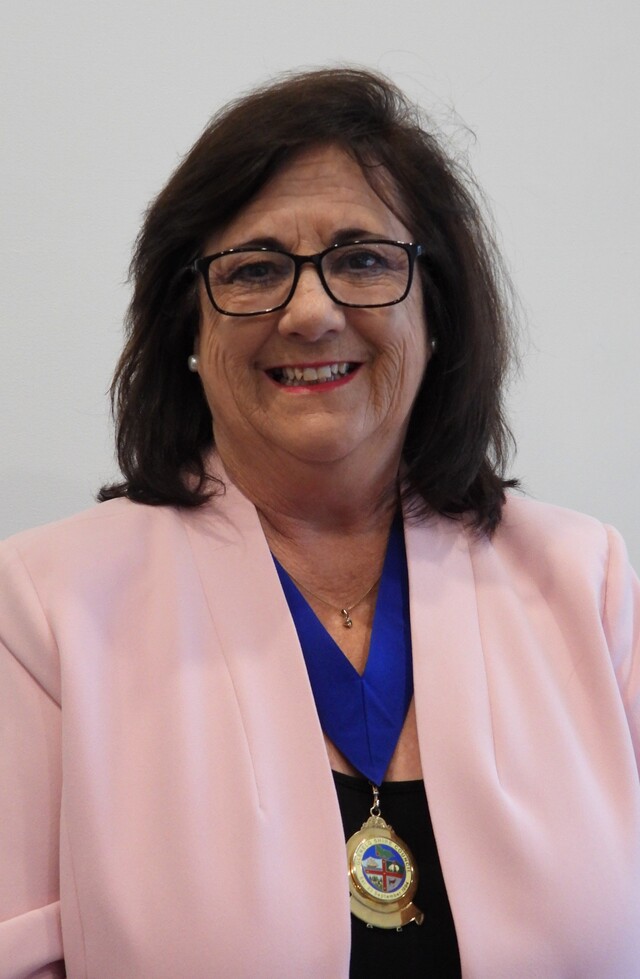Almost the size of Italy, and with winds of up to 290 kilometres per hour, Queensland’s Tropical Cyclone Yasi was a much bigger storm than Larry in 2006, yet left behind less damage in most areas.
The Tully and Cardwell areas were the hardest hit. At the time of going to press, few serious injuries had been reported but there had been one fatality. The category five storm has left behind a damage bill expected to be around
$3.5 billion – and another challenge for all spheres of government and the many affected communities.
Meanwhile, the cleanup and recovery continues for the many councils across the country after the devastating floods that have washed out thousands of Australian homes, roads and rail lines and killed at least 25 people.
The Queensland floods are reportedly the State’s worst natural disaster in history. An area greater than Germany and France combined was inundated with flood waters, presenting a whopping damage bill of $5.6 billion.
Fifty one of the State’s 73 councils were disaster declared – a $2 billion bill facing them alone.
Thanks to a massive volunteer effort, much of the cleanup has now been done and most towns are moving into the recovery and rebuild phase – expected to take years to complete.
In a video update on the Local Government Association of Queensland (LGAQ) website Executive Director Greg Hallam said there are a range of priorities for councils in recovery mode, all of which are being addressed.
“There is a need for provision of information and advice around the Natural Disaster Relief and Recovery Arrangements, as well as face to face support,” he said. “LGAQ is organising relief, equipment and services from other councils to go in where they are needed. We have also also put LGAQ staff into the most affected Queensland councils.
“We currently have 60 staff working on fundamental issues, getting communities functioning again, and making sure all audits, paperwork and assessments are done properly and submitted to the relevant bodies.
“LGAQ is trying to coordinate all council activities to ensure local people doing the job can get on with it – we are taking the pressure off them.”
Greg Hallam said the most important thing is for people to learn from and not forget the lessons of these floods. He pointed to Brisbane, where Council had the foresight to establish a buyback scheme for houses and businesses in flood zone areas well before this disaster hit.
“Council has bought 45 of 207 flood prone properties in Brisbane at a cost of $18 million since 2006,” he said. “That is the sort of policy foresight that needs to be repeated across the State.
“The reconstruction authority should have all the powers it needs, including the power to compulsorily acquire flood prone properties, if Queenslanders are to receive maximum protection from future disasters.”
However, Greg Hallam said other councils would be hard pressed to fund similar schemes themselves, particularly given the huge bill they face restoring and repairing public infrastructure, such as roads and water treatment facilities in the aftermath of the floods.
“The Federal and State Governments owe it to these communities to shoulder the financial burden to do what is required to get them back on their feet as soon as possible,” he said.
Prime Minister Julia Gillard said the Federal Government is fast tracking approvals for the 457 visa program for temporary skilled migrants to help with flood recovery.
“There will be extra resources, assistance to employers and simpler processes to ensure a five day turnaround for ‘decision ready’ applications for workers in a host of nominated occupations to work on rebuilding Queensland,” she said.
While Queensland bore the brunt of the heavy rains experienced across the country, other States are also facing years of recovery.
With a flood front 40 kilometres wide in some places, one quarter of Victoria was affected, with more than 94 towns in 30 municipalities directly impacted. Some areas in the west of the State received their entire summer rainfall average in just five days.
Flooding from the Campaspe River affected 80 per cent of the township of Rochester, small pockets of residential areas in Echuca and a large proportion of Campaspe Shire’s rural sector. Across the Shire, the road network has also been inundated with water.
Campaspe Mayor Councillor Neil Pankhurst said that staff have completed an initial assessment, with immediate safety works completed. Preliminary inspections and reports have identified 85 damaged sites, with costs estimated to exceed $1 million.
“Staff have now commenced a more detailed inspection of the road network, a process that will take several weeks,” Councillor Pankhurst said.
This inspection process will ensure all works to roads, bridges and culverts are captured, and required works costed. An application will then be made to the Department of Treasury and Finance.
CEO of the Municipal Association of Victoria (MAV) Rob Spence said Campaspe Shire is one of few in recovery mode.
“With waters still moving north, we are a long way off knowing the real impact,” he said. “The MAV is assisting councils to get necessary resources delivered, and is working with the Victorian Government to bring in resources for assessment. Typically, the damage to roads and bridges will be significant.”
Rob Spence said that funding packages available from the State and Federal Governments are good, but will need to be reassessed once councils gain better knowledge of what is required and what needs to be fixed.
He said that the few councils in recovery mode tend to be councils covering large areas, but have small staff numbers restricting their ability to get assessments done.
“We have had requests from councils looking for people with engineering skills to come in and do the assessments for them,” he said. “The hardest part is that most of these councils have now been flooded three times since September. They were just starting to recover from both the September and December floods when they were hit with this latest round of devastation.”
In recent years, the MAV has been working to promote ‘regional clusters’ of councils, so that in the event of an emergency, unaffected councils in that cluster can come to lend a hand.
Rob Spence said this has been working quite well.
“We’re getting quite good at managing emergency situations here in Victoria,” he said. “First it was the bushfires, then a locust plague and now floods. I don’t think there is much else that could be thrown at us.”
In New South Wales, 71 Local Government Areas have had a natural disaster declared as a result of flooding over the past three months, while floods to northern Tasmania have left a repair bill in the vicinity of $9 million.
Western Australia’s Carnarvon area was also flooded, while bushfires roared through the State’s south. The Western Australian Government has set up a $3 million fund to help Carnarvon fruit and vegetable growers get back on their feet.
The Australian Local Government Association (ALGA) is asking well resourced councils not affected by the floods to contribute what they can.
Ã¥ALGA President Genia McCaffery said this could come in the form of building surveyors, planners and engineers.



